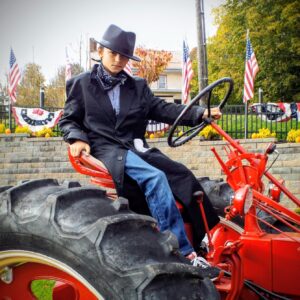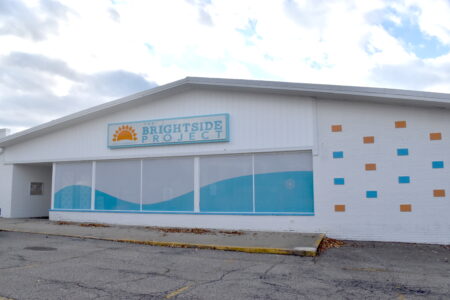Salem Saxon Club marks 125 years of change
SALEM-Henry Spack Sr. is in his 80s and said his family name has been a part of the Salem Saxon Club going back to his mother, father and grandfather.
Last month, the Salem Saxon Club, long known as the site of many mid-summer get-togethers, class reunions and wedding receptions, held its 125th anniversary while hosting a two-day national convention on May 14 and 15.
The event featured speakers Thomas Manning, the outgoing Alliance of Transylvania Saxons president, and Columbiana County Commissioner Tim Weigle.
Spack said his family immigrated to the United States from Transylvania, which is now Rumania.
“There’s not too many Saxons left in Transylvania,” he said, “the government took their land.”
The Salem Saxon Club is the first Saxon group to have organized into a society for the benefit of its members.
Spack said, “Our lodge was the first Transylvania Saxon Lodge in the United States.”
The original corporate charter is dated 1891 when 15 immigrants felt it necessary to organize the First Transylvania Saxon Sick Benefit Society.
Today’s books for Branch 19 show about 250 members with an equal number for the ladies, Branch 18 (women’s), lodge that use to rent out the 30-acre facility.
Spack has been president four times dating back to 1966 when the club celebrated its 75th anniversary, and his brother, George, has been president for 25 years.
The club is located a mile-and-a-half south of Salem on state Route 9, or a mile from the bypass, but it started out on South Broadway Avenue on property that was later presented to the Emmanuel Lutheran Church.
In 1905, on Railroad Street, the “Saxon Home” was built.
It became the stage for Saxon celebrations, and a large dance hall was built in the old apple orchard behind the current building and moved under roof sometime in the late 1930s when the facility became “most active” culturally with stage plays and musicals for which brothers Samuel Krauss, John B. Gunesch and John Scherer “contributed much to the success of the productions.”
Krauss, of course, founded and conducted the Salem High School Band, was a graduate of the famed Curtis Institute of Music where he later taught trumpet for 24 years, and was first trumpet for the Philadelphia Orchestra performing under maestro Eugene Ormandy for many years.
The Saxon Club entertained more activities as the second generation of Saxons moved across the nation and sports became popular and the Salem Junior Saxon Club was formed.
The club sponsored a Singerfest in 1937 that was attended by thousands of people with a large three-ring circus tent serving as the concert hall.
In 1958, the Saxon Lanes were built in Salem and opened in 1959. Bowling became a popular activity and history showed that the success of the lanes and condition of the home called for renovations. The home was torn down and the new club and restaurant hall were built in 1969.
Since, the dance hall was enlarged, the picnic pavilion and modern kitchen added, and a children’s playground and a ballfield were provided.
The lanes and restaurant were sold in 1979 and the club focused on lodge life at the Saxon Country Club on state Route 9. Early in 1980 they decided to build a new club home and three years later a six-room ranch home for the caretaker was built.
“George and I built the pavilion with the kitchen added later,” Spack said.
Years ago the driveway was lined with German Linden trees that salute visitors on the way in and out.
Through the years, Weber wrote, Branch 19 has played an important role in the Alliance of Transylvanian Saxons by hosting conventions concerts and youth affairs.
The trophy case in the main building is dedicated to military servicemembers who made the supreme sacrifice: Martin Werner, George Spack, Daniel Fromm and William Holzinger.
Along with the trophy case is a picture of Fred Theiss, a grand trustee and then grand president of the Alliance of Transylvanian Saxons.


